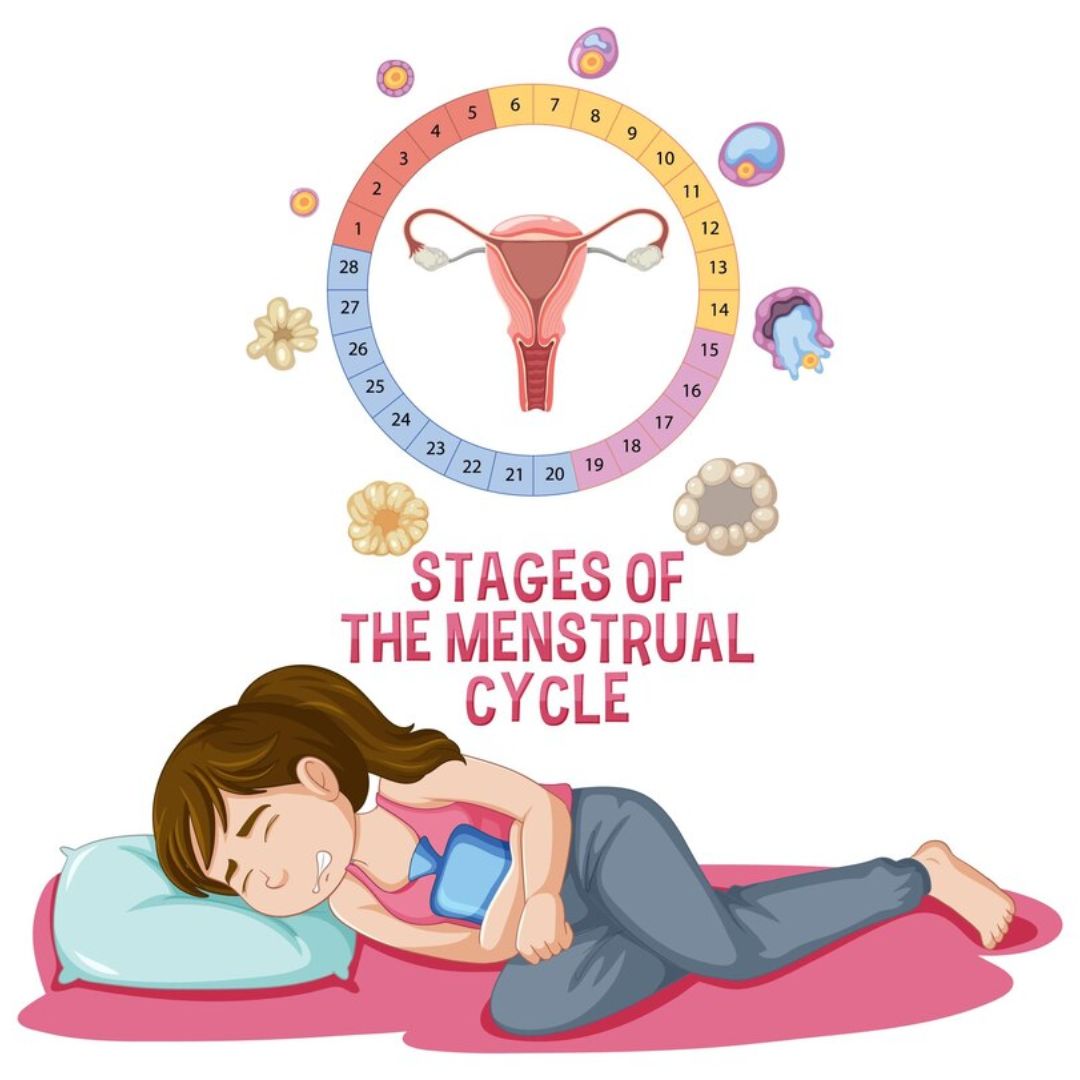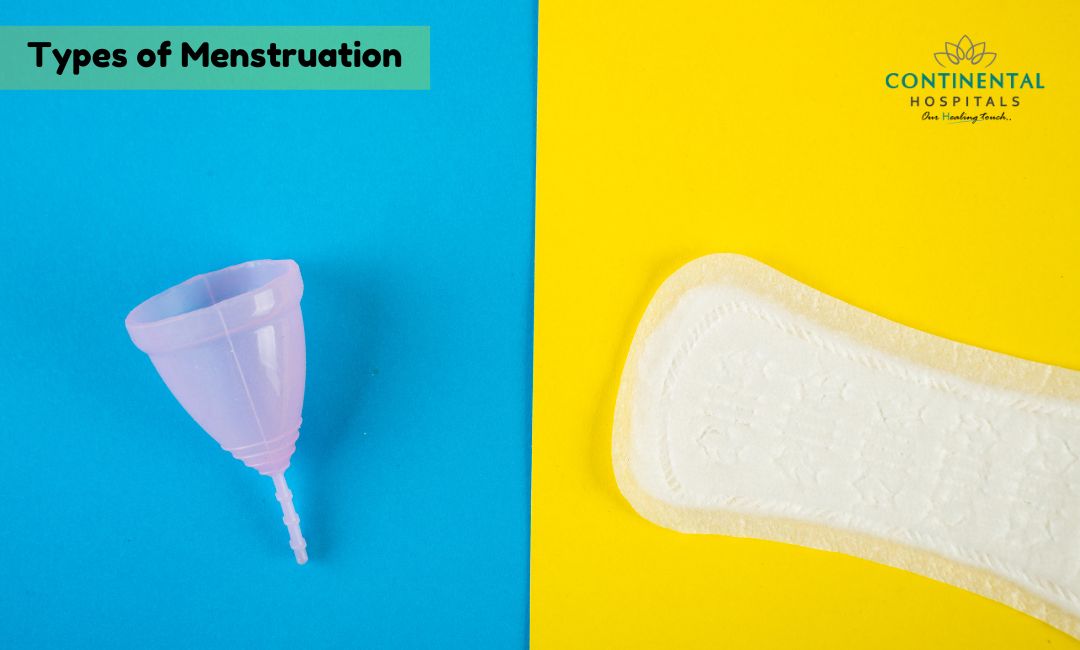Menstruation is a natural and essential part of a woman's reproductive health. However, it can vary greatly from person to person, and understanding the different types of menstruation can help women manage their health more effectively. In this blog, we’ll explore the various types of menstruation, what they mean, and how they can impact overall health. We’ll also discuss treatment options available at Continental Hospitals for any menstrual-related concerns.
What Is Menstruation?
Menstruation, commonly known as a period, is the monthly process where the uterus sheds its lining, resulting in bleeding from the vagina. This cycle is a normal part of a woman's reproductive system and typically lasts between 21 to 35 days, with bleeding lasting from 2 to 7 days.
Types of Menstruation
Understanding the types of menstruation can help identify if something is abnormal and needs medical attention. Here are the main types of menstruation:
Regular Menstruation
Characteristics: Regular menstruation is when a woman experiences a predictable and consistent cycle each month. Periods typically occur every 28 days, but anywhere from 21 to 35 days is considered normal. The bleeding usually lasts between 3 to 7 days.
🥗 Healthy Plate Challenge
🍽 Add Your Favorite Dish
Pick Your 6 favorite foods, eat, and see the results.Drag & drop foods onto your plate.
Drop Food Here
What It Means: Regular menstruation indicates a healthy hormonal balance and reproductive system. It suggests that the body is functioning normally in terms of ovulation and endometrial shedding.
Irregular Menstruation
Characteristics: Irregular menstruation occurs when the cycle length varies significantly from month to month. Periods may come early or late, and the duration of bleeding can also fluctuate.
What It Means: Irregular menstruation can be caused by various factors, including stress, hormonal imbalances, or underlying health conditions. It may be a sign that further evaluation is needed to determine the cause.
Heavy Menstruation (Menorrhagia)
Characteristics: Heavy menstruation is characterized by excessively heavy or prolonged bleeding. Women may experience soaking through pads or tampons every hour or having periods that last longer than 7 days.
What It Means: Menorrhagia can be caused by hormonal imbalances, uterine fibroids, or other medical conditions. It can lead to anemia and significant discomfort, requiring medical attention.

Light Menstruation (Hypomenorrhea)
Characteristics: Light menstruation involves very light bleeding, which may last for a shorter duration than usual. Women may only experience spotting or minimal bleeding.
What It Means: Light menstruation can be normal for some women, but it may also indicate hormonal issues, thyroid problems, or other health concerns. It’s important to consult a healthcare provider if this is a new or persistent issue.
Skipped Periods (Amenorrhea)
Characteristics: Amenorrhea refers to the absence of menstrual periods for three or more months. It can be primary (when a woman has never had a period by age 15) or secondary (when periods stop after previously being regular).
What It Means: Skipped periods can result from various factors, including pregnancy, extreme weight loss, stress, or medical conditions such as polycystic ovary syndrome (PCOS) or thyroid disorders.
Spotting
Characteristics: Spotting is light bleeding that occurs outside of a woman’s regular menstrual cycle. It may appear as small amounts of blood or brown discharge.
What It Means: Spotting can be caused by ovulation, implantation bleeding, hormonal changes, or other factors. If spotting is frequent or unusual, it’s advisable to seek medical advice.
Common Symptoms Associated with Menstrual Types
Different types of menstruation come with various symptoms. Some common symptoms include:
Cramps: Pain in the lower abdomen or back, often associated with heavy menstruation.
Bloating: Swelling or discomfort in the abdomen, common in both regular and irregular periods.
Mood Swings: Emotional changes that can accompany hormonal fluctuations.
Fatigue: Feeling unusually tired, which can occur with heavy bleeding.
When to Seek Medical Help
While variations in menstruation can be normal, certain symptoms or patterns may indicate underlying health issues. Seek medical attention if you experience:
- Severe Pain: Intense cramps or pelvic pain that interferes with daily activities.
- Excessive Bleeding: Soaking through pads or tampons frequently, or bleeding that lasts longer than a week.
- Skipped Periods: Missed periods for more than three months without an obvious cause.
- Unusual Symptoms: Significant changes in menstrual flow, color, or consistency.
Treatment Options at Continental Hospitals
If you’re experiencing issues with your menstrual cycle, Continental Hospitals offers a range of treatment options to address various menstrual concerns:
Hormonal Therapy: To manage irregular periods, heavy bleeding, or light menstruation, hormonal treatments such as birth control pills or hormone replacement therapy may be recommended.
Diagnostic Testing: Comprehensive testing, including blood tests, ultrasounds, or endometrial biopsies, can help identify the underlying cause of menstrual irregularities.
Surgical Interventions: For conditions like uterine fibroids or severe endometriosis, surgical options such as hysteroscopy or laparoscopic surgery may be considered.
Lifestyle and Nutritional Guidance: Recommendations on diet, exercise, and stress management can help alleviate symptoms related to menstrual issues.
Specialized Care: The expert gynecologists at Continental Hospitals provide personalized care tailored to each patient’s needs, ensuring effective and compassionate treatment.
Conclusion
Understanding the different types of menstruation can help you better manage your reproductive health and recognize when something might be amiss. Regular menstrual cycles are a sign of good health, but irregularities or changes in your cycle may warrant further evaluation. Continental Hospitals offers a range of diagnostic and treatment options to address various menstrual concerns, ensuring that women receive the best possible care for their unique needs.
If you have any concerns about your menstrual cycle, don't hesitate to reach out to our best gynecologist for guidance and support.
Related Blog Articles:
- Impact of Uterine Fibroids on Fertility and Pregnancy
- Ectopic Pregnancy: Risk Factors and Prevention Tips
.webp)














